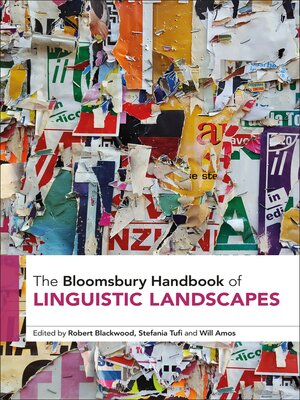
Sign up to save your library
With an OverDrive account, you can save your favorite libraries for at-a-glance information about availability. Find out more about OverDrive accounts.
Find this title in Libby, the library reading app by OverDrive.



Search for a digital library with this title
Title found at these libraries:
| Library Name | Distance |
|---|---|
| Loading... |
Shortlisted for the BAAL Book Prize 2025
Presenting a detailed examination of the origins, evolutions, and state-of-the-art of linguistic landscape research, The Bloomsbury Handbook of Linguistic Landscapes is a comprehensive guide to the burgeoning field of linguistic landscapes and the study of meaning and interpretation in public spaces and settings.
Providing a thorough synopsis of the theories, methodologies, and objects of study which inflect linguistic landscape research across the world, this book is the ideal companion for both new and experienced readers interested in the processes of communication in public spaces across diverse settings and from a broad range of perspectives. Through a wide selection of case studies and original research, the handbook highlights the global reach of linguistic landscape theories and practices. Scrutinising an array of qualitative, quantitative, and mixed methodological approaches for analysing a wide spectrum of meaning-making phenomena, it investigates semiosis in contexts ranging from graffiti and street signs to tattoos and literature, visible across a variety of sites, including city centres, rural settings, schools, protest marches, museums, war-torn landscapes, and the internet.
Presenting a detailed examination of the origins, evolutions, and state-of-the-art of linguistic landscape research, The Bloomsbury Handbook of Linguistic Landscapes is a comprehensive guide to the burgeoning field of linguistic landscapes and the study of meaning and interpretation in public spaces and settings.
Providing a thorough synopsis of the theories, methodologies, and objects of study which inflect linguistic landscape research across the world, this book is the ideal companion for both new and experienced readers interested in the processes of communication in public spaces across diverse settings and from a broad range of perspectives. Through a wide selection of case studies and original research, the handbook highlights the global reach of linguistic landscape theories and practices. Scrutinising an array of qualitative, quantitative, and mixed methodological approaches for analysing a wide spectrum of meaning-making phenomena, it investigates semiosis in contexts ranging from graffiti and street signs to tattoos and literature, visible across a variety of sites, including city centres, rural settings, schools, protest marches, museums, war-torn landscapes, and the internet.







